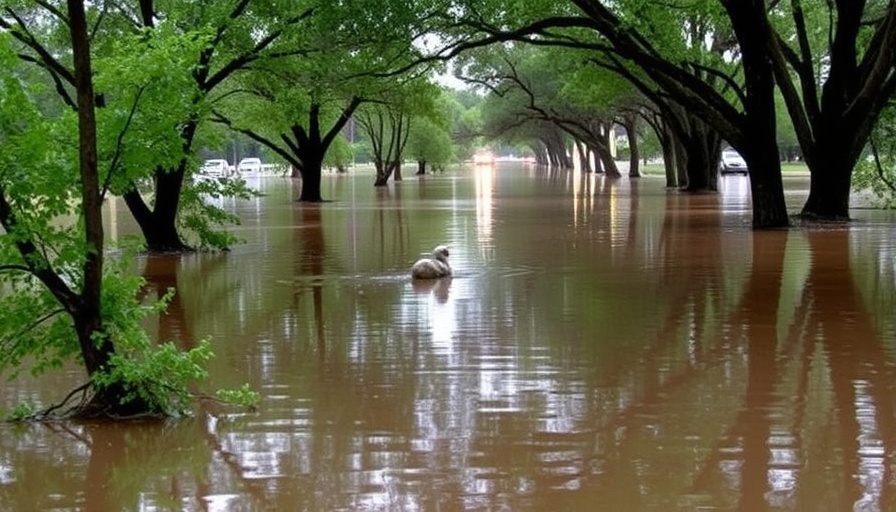
Central Texas Faces Tragic Impact from Recent Flooding
In a harrowing turn of events following catastrophic flooding in Central Texas, Governor Greg Abbott has announced a significant update regarding the number of missing persons in the Kerr County area. What once stood at a staggering total of 161 missing individuals has been revised down to 97. This announcement follows desperate search and rescue operations initiated after the Guadalupe River surged to unprecedented levels, leading to devastating consequences that have shaken the local community.
The Human Cost of the Flooding
The Texas Department of Public Safety reported that current confirmed fatalities have risen to at least 132, highlighting the human cost of this disaster. Among the deceased, the death toll includes 106 individuals from Kerr County, of which 70 were adults and 36 were children. The emotional toll on surviving family members and the broader community cannot be overstated, as many continue to search for closure amidst ongoing recovery efforts.
Ongoing Search and Rescue Efforts
Search teams have continued to work tirelessly despite the challenging conditions. Governor Abbott expressed gratitude toward the first responders and volunteers who have shown exemplary commitment to the cause. "For those who have passed away, it is so important to provide closure for their families that we find them and identify them," Abbott stated, emphasizing the state’s focus on both search and recovery operations. The number of missing persons still reported remains uncertain, with the governor stressing that it does not necessarily imply all are casualties of the flooding.
Understanding the Disaster’s Scope
The flooding events of July 4th saw the Guadalupe River swell dramatically, causing widespread devastation. To put it into context, when rivers exceed their banks by as much as 30 feet, the safety of local communities is immediately compromised. This disaster has prompted discussions about the infrastructure and emergency response systems in place in Central Texas, particularly regarding flood preparedness and community resilience. Local initiatives aimed at enhancing flood management systems will likely emerge as a crucial focus for city officials and disaster response teams.
A Community United in Grief and Recovery
In the wake of this disaster, local organizations and communities are mobilizing to provide support to those affected. Non-profits aimed at helping families who lost children in the flooding have sprung up, demonstrating the community's resilience and dedication to helping one another heal. The tragedy has united the community in grief, showcasing an inspiring spirit of cooperation and solidarity, particularly as first responders continue their search efforts.
Lessons and Future Preparedness
As recovery efforts continue, it is vital to evaluate what can be learned from this catastrophic event. Discussions around enhancing the effectiveness of local infrastructure, improving emergency services, and developing more robust community response plans are more urgent than ever. The devastating impact of flooding underscores the need for comprehensive strategies that involve not just immediate reaction to disasters, but proactive measures to mitigate risk.
As we reflect on this tragedy, it is essential to consider how technology, community organization, and governmental policies can come together to prevent future losses. Overall, these are reminders of the importance of disaster preparedness and community resilience in the face of natural calamities.
For those in Dallas and surrounding areas, staying informed about local responses, recovery efforts, and emergency preparedness plans is crucial. Keeping vigilant about weather conditions and understanding flood risks can help in mitigating future disasters.
Call to Action
We encourage residents to stay updated on local news and participate in community initiatives aimed at disaster preparedness. Engaging with local organizations can make a profound difference in recovery efforts and future resilience strategies. Together, we can build a stronger, safer community.
 Add Element
Add Element  Add Row
Add Row 



Write A Comment